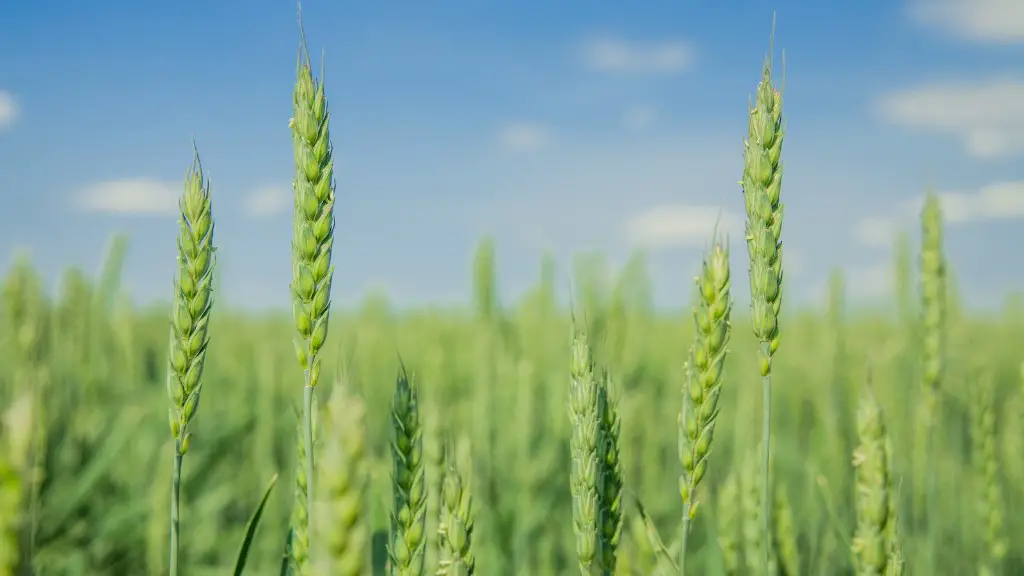Agriculture plays a big role in releasing methane into the atmosphere, and it’s important to understand how this happens. Methane is a potent greenhouse gas that contributes to global warming, and it is released from agricultural activities. Agriculture releases methane through a variety of sources, including animal husbandry, manure management, rice production, and fertilizer production. Animal husbandry is a major source of methane emissions, as the animals produce large amounts of manure that releases methane into the atmosphere. Manure management also releases methane, as the bacteria in the manure break down the organic material and release methane into the environment. Rice production also releases methane, as the soil microbial activity releases one fourth of the methane produced. Fertilizer production also contributes to methane emissions, as the production of fertilizer uses energy and releases methane into the environment.
Animal Husbandry
Animal husbandry is one of the major sources of methane emissions from agriculture. Cattle, sheep, and other livestock produce significant amounts of manure. This manure creates a rich environment for the bacteria that break down the organic material, releasing methane gas into the atmosphere. The biggest contributors of methane from livestock are ruminates, such as cow, sheep, and goats. These animals are able to break down the plant material using their stomachs which releases methane as a byproduct. Even small amounts of methane can have a significant effect on the atmosphere, as methane is a powerful greenhouse gas.
In order to reduce methane emissions from livestock, it is important to manage the animals efficiently. This means getting the animals on a good diet and ensuring that they have enough space to roam around and exercise. Additionally, the amount of manure produced by the livestock needs to be managed properly, as the manure produces methane when it is broken down. Finally, it is important to make sure that the crops that the animals eat are grown using sustainable methods, as this will reduce the amount of methane released when the manure is broken down.
Manure Management
Manure management is also an important source of methane emissions from agriculture. As manure breaks down, the bacteria in the manure breaks down the organic material and releases methane into the atmosphere. In order to reduce methane emissions from manure, it is important to use sustainable manure management practices. This includes properly composting the manure, using low-emission technologies, such as anaerobic digesters, and avoiding the burning of manure. Additionally, it is important to reduce the amount of manure that is produced by livestock, as this will reduce the amount of emissions released.
In order to make manure management more sustainable, it is important to ensure that the manure is composted correctly. This means ensuring that oxygen is present in the compost pile in order to aid in the decomposition of the organic material. Additionally, low-emission technologies can be used in order to reduce the methane emissions from the manure. An anaerobic digester can be used to break down manure and capture the methane, which can then be used as a source of energy. Finally, it is important to avoid the burning of manure, as this will release the methane directly into the atmosphere.
Rice Production
Rice production is a major source of methane emissions from agriculture. As rice is grown, the soil microbial activity in the rice paddies releases one fourth of the methane emissions. This methane is a powerful greenhouse gas and significantly contributes to global warming. In order to reduce methane emissions from rice production, it is important to use sustainable methods of production. This means avoiding the overuse of nitrogen-based fertilizers, as this releases more methane into the atmosphere. Additionally, it is important to use sustainable irrigation techniques, as this can reduce the amount of methane emissions. Finally, it is important to reduce the amount of pesticides and herbicides used in rice production, as these can also contribute to methane emissions.
Fertilizer Production
Fertilizer production is also a major source of methane emissions from agriculture. The production of fertilizers requires a significant amount of energy, releasing methane into the atmosphere as a by-product. In order to reduce the methane emissions from fertilizer production, it is important to use sustainable methods of production. This includes using renewable energy sources, such as solar and wind, and using low-emission fertilizer production technologies. Additionally, it is important to avoid the use of synthetic fertilizers, as these can also release methane into the atmosphere.
Conclusion
Agriculture plays a major role in releasing methane into the atmosphere. Methane is a potent greenhouse gas that contributes to global warming, and it is released from a variety of agricultural sources, including animal husbandry, manure management, rice production, and fertilizer production. In order to reduce methane emissions from agriculture, it is important to manage the animals efficiently, use sustainable manure management practices, use sustainable methods of rice production, and use sustainable fertilizer production techniques. These measures can help reduce the amount of methane released from agriculture and lessen the impacts of global warming.


